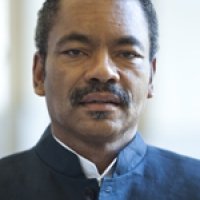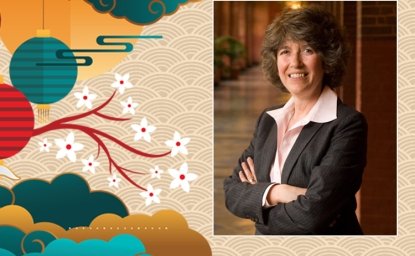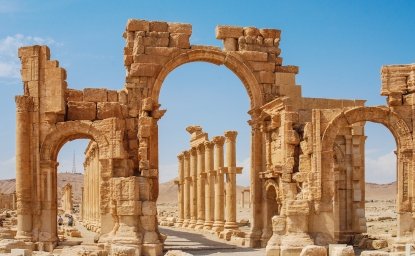On April 16, 1862, President Abraham Lincoln signed the District of Columbia Emancipation Act, which freed the city’s 3,128 slaves. This came nine months before the Emancipation Proclamation, which granted freedom to slaves in only parts of the Confederacy still in rebellion.
“I trust I am not dreaming, but the events taking place seem like a dream,” the great orator Frederick Douglass wrote of the act. “Not only a staggering blow to slavery throughout the country, but a killing blow to the rebellion — and the beginning of the end for both.”
Perhaps this is why the marble federal city built with slave labor in the 1790s has often stood as the political “city on a hill” to the nation’s African Americans. Just as Puritan governor John Winthrop’s biblical image of Boston served as a symbol of “freedom” to many whites in the New World, Washington has served as a beacon to blacks seeking freedom from slavery, Jim Crow and racism.
Clearly, the original Puritan city on a hill proved easier to climb and conquer for white Americans of WASP and Irish-Catholic backgrounds. For generations of blacks born and raised here, and others who migrated, the hill has been steeper to climb and easier to fall off.
So today if African Americans in the District seem overly concerned about their status with the recent drop in population, they have good reason. At their peak in 1970, blacks represented 71 percent of the District’s 756,500 residents, but new census estimates show that the city’s black population has recently fallen to below 50 percent of its 617,996 residents. Increasingly, many blacks feel a sense of betrayal as even those who grew up here cannot afford to live in this city.
Gentrification, the continued stream of blacks to the suburbs, and the debate over political power has created new strains in the District’s body politic that, along with the struggle for congressional representation, stand at the center of political and social discourse. Losing majority black status is no small thing for black Washingtonians.
This is, after all, the city that Benjamin Banneker, the self-taught African American scientist and mathematician, helped to survey, swamp by swamp. He learned the art, as a youth, from neighboring mill owner Andrew Ellicott, who, although a Quaker, became a major in revolutionary Army and as the lead surveyor marked the boundaries and laid out the streets.
This is the city where Douglass and other leaders of the Black Convention Movement paid personal visits to President Abraham Lincoln to prod him forward on enlisting and mobilizing black soldiers in the Civil War.
This is the city where Elizabeth Keckley, the former slave, seamstress and confidante of Mary Todd Lincoln, wrote after President Lincoln had signed the act to free slaves in the District that “in the summer of 1862, freedmen began to flock into Washington from Maryland and Virginia . . . with great hope in their hearts and with all their world goods on their backs.”
She added that “they came to the Capital looking for liberty.” And thus, the city from which the Great Emancipator sought to give America a “new birth of freedom,”although perhaps not a place of complete liberty, became in the African American imagination a unique destination that was at least halfway to freedom.
This city is the birthplace of the great Duke Ellington, perhaps the world’s most prolific composer. This is the city where Thurgood Marshall, the first African American member of the Supreme Court, went to law school at Howard University when the University of Maryland turned him down on racial grounds.
This is the city where the Rev. Martin Luther King Jr. preached about his dream of racial equality. This is the city where the renowned Howard Theatre, first opened in 1910 and reopened April 9, the birth date of the immortal Paul Robeson, will once again serve as a cultural beacon.
This is the city that has sent the brilliant Yale-educated constitutional lawyer Eleanor Holmes Norton to Congress for 20 years, though she has still has no vote as a lawmaker on the House floor.
And this is the city where for over two centuries a rich African American culture has developed at institutions such as Howard University and the Nineteenth Street Baptist Church, where President Obama and his family have worshiped. This city has evolved as a center of black advancement, education, social discourse and, most significantly, political empowerment.
As in most of the nation, the displacement of blacks has historical precedents. Racially restrictive housing coupled with job segregation had forced many blacks into alley dwellings. But as whites needed housing, the Alley Dwelling Act of 1918 was passed, condemning homes primarily inhabited by blacks and forcing entire neighborhoods to relocate.
In response, many blacks moved to Southeast Washington, across the Anacostia River, to meet their housing needs. Such relocation again happened when houses were torn down in the 1960s during “urban renewal,” a.k.a. “Negro removal,” as wealthy whites moved to the waterfront.
Indeed, the District has always keenly mirrored the struggles of black America. As in Chicago, Baltimore and Newark, dilapidated homes and public housing were torn down but not replaced, as promised. As the Greek, Italian and Jewish shopkeepers left the city, few blacks were able to fill the vacuum. One simple reason is, as Washington Post reporter Ben Gilbert wrote at the time, “Money and credit continued to be a problem for Negroes.”
When then-Mayor Marion Barry proclaimed in the 1980s that “we are in charge,” it was an exaggeration. D.C. may have been called “Chocolate City,” but Congress still had and has veto power over the city budget and taxing authority, and the Federal City Council still wields broad economic power.
Congress constantly experiments with policies it wants to test, including school vouchers and repealing gun control. And in 2012, with a population of more than 600,000, which is larger than Wyoming’s and slightly less than Rhode Island’s, residents still lack “full” voting representation in Congress, the only capital in the industrialized world without such a right.
Recent figures show that in Ward 8, centered around Anacostia, the official unemployment rate is 28 percent. Black youths want to work, and recently residents took to the streets to protest the lack of jobs on the bridge projects that go to the area.
The average white family income in the District is $101,000; for blacks, it stands at $39,000. Whites in the United States have a huge advantage in inherited wealth, which allows many to help pay the down payment on houses for their children, something that many black residents in D.C. would like to but simply cannot do.
With the highest educational level in the nation, young college-educated whites moving here find it easier to secure jobs, especially in the high-tech industries. In many cases, the public schools are lacking and most blacks cannot afford the District’s expensive private schools and the high cost to rent or own a home, so they leave. In short, many young whites come to the city because they can find jobs and housing that they can afford; many blacks leave because they can find neither.
A new study by the Sage Foundation and Brown University shows that rising income inequality has led to the shrinking of the middle class, and those families living either in poverty or affluence account for one-third of all families, up from 15 percent in 1970. In the District, the rise in poverty has been concentrated among blacks and Latinos, and the rise of affluence among whites and some blacks.
A census report shows that D.C.’s poverty rate for school-age children jumped from 24.8 percent in 2007 to 30.9 percent in 2010, becoming one of only 73 jurisdictions in the nation to surpass 30 percent.
In the end, the task is to guarantee that in our increasingly international city, the hopes and aspirations of African Americans over the 220-some years since the District was established to live in freedom and equality, socially and economically, are not forgotten.
One hundred and fifty years ago, Douglass hailed the emancipation of slaves in Washington but said that “the negro is not abolished as a degraded caste,” urging the continued fight for social and economic equality and justice. African Americans want to stay in Washington. They have worked hard and struggled to achieve Douglass’s dream, ever elusive, of climbing to the top of the city’s shining hill.
Maurice Jackson teaches history at Georgetown University. He is the author of “ Let This Voice Be Heard: Anthony Benezet, Father of Atlantic Abolitionism.” A Woodrow Wilson International Center for Scholars fellow, he is at work on “Halfway to Freedom: African-Americans and the Struggle for Social Progress in Washington, D.C.”





